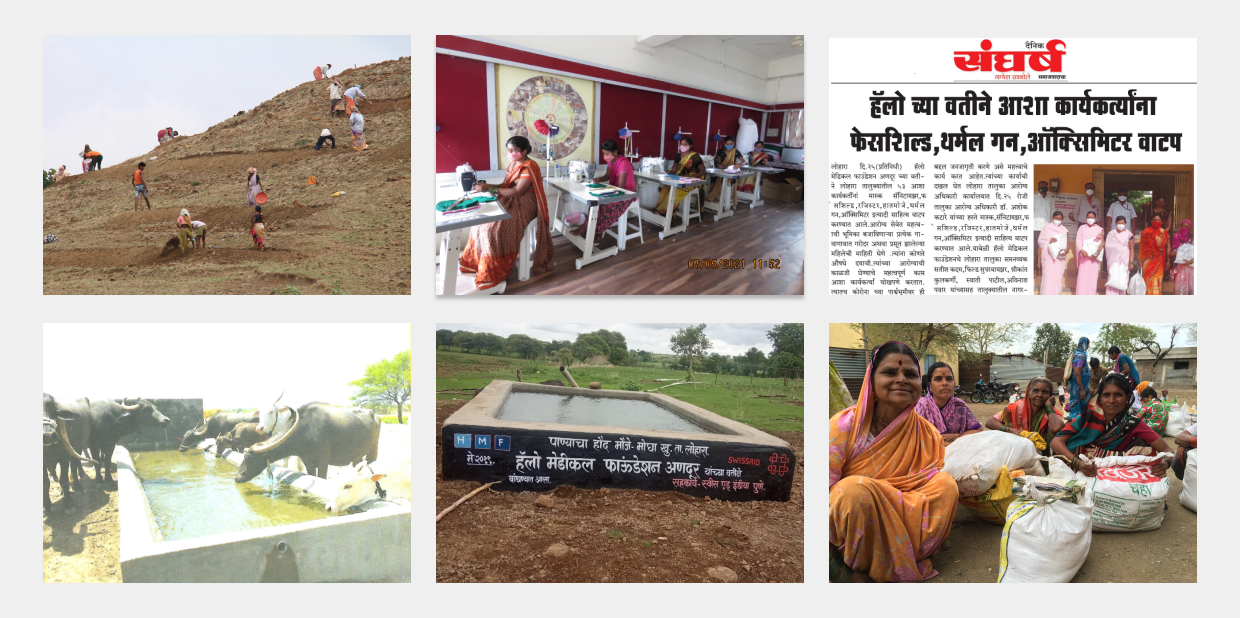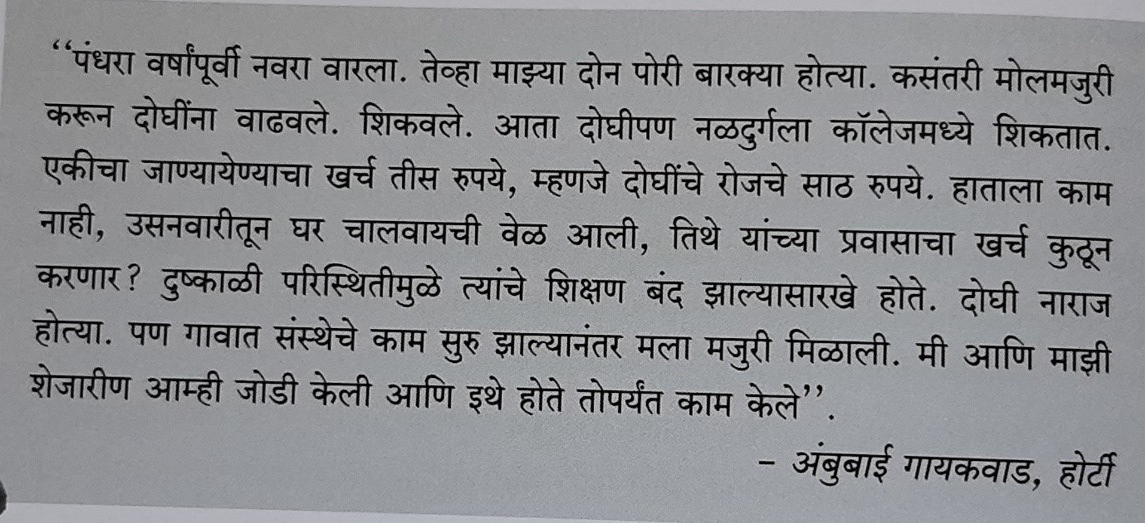HMF is committed to supporting vulnerable communities during prolonged drought periods in the regions where it operates. In these challenging times, HMF’s mission remains steadfast: to provide essential relief to individuals, families, and farmers to help them recover from adversity. This assistance includes relief in the form of food, water, and fodder supplies, as well as the provision of water storage facilities, financial aid, mental/emotional support, and medical assistance
About
The region where HMF operates is characterized by its susceptibility to drought, with an agrarian economy heavily reliant on consistent rainfall. Years of persistent rainfall deficits plunge villagers, particularly vulnerable individuals, the farmers, and their families, and particularly single women, into deep crises, prompting HMF to consistently intervene and offer assistance.

HMF’s commitment: Supporting the village communities through the drought crisis
Drought Relief Work 2016
The year 2015-16 marked the third consecutive year of rainfall deficit, leading to acute water shortage that brought agricultural work and local employment to a grinding halt. Crop failures, mounting debts, and fodder shortages accompanied by water shortages exacerbated the crisis for farmers; driving some of them to even suicide. Amidst this dire situation, HMF provided relief assistance to vulnerable groups including single women, the elderly, the farmers, and their families.
Relief Activities and reach
HMF campaigned in 140 villages in Tuljapur and Lohara blocks of Osmanabad (now Dharashiv) district and Akkalkot block of Solapur district to dialogue with farmers, particularly to enable them to explore alternatives to overcome the crisis. Utilizing the medium of folk arts HMF workers reached out to villagers, fostering an environment of mutual community support.
In addition to facilitating dialogue, HMF provided essential relief measures based on a need assessment survey carried out from 6th to 14th January 2016. It addressed critical needs such as food, water, work, employment, general and mental health, fodder and water for animals, and particularly the needs of single women.
It systematically undertook relief efforts by engaging village-level stakeholders to promote collective decision-making and mutual cooperation in these difficult times. This included determining locations for installing water tanks, exploring agricultural options, and implementing the ‘cash for work’ scheme. Additionally, the initiative collaborated with government officials, environmental experts, volunteers, and philanthropists.

| Nature of relief | Details |
|---|---|
| Cash for Work Program | Implemented across 10 villages for 9 months, benefiting 1337 individuals with local employment. Work on watershed development worth Rs. 42,26,700 lakhs was carried out. |
| Ration Distribution | Specifically targeting single women and elderly individuals, benefiting 723 such individuals. |
| Water Tank Installation | Provided 2000-liter water tanks to 70 villages for storing drinking water. Benefitted 4723 families and 1087 school students. Water tankers supplied water to the villages. |
| Animal Water Troughs Construction | Constructed 40 water troughs for animals, ensuring hydration needs were met for about 7198 animals. |
| Health Check-up Camps | Organized physical and mental health check-up camps. A team of 65 HMF workers underwent training to identify and refer individuals with mental health issues. 24 mental health diagnosis and treatment camps were held, diagnosing 3197 individuals with mental health issues. |
| Priority for Relief Distribution | Special attention given to ensuring relief reaches single women. |
| Relief Fund Allocation | An amount of Rs. 1,28,68,280 benefited 1,29,800 villagers residing in 70 drought-hit villages. |
Financial partners
SWISSAID, India
NAAM Foundation
Bank of India Workers’ Union
Royal Rock Adventure Club
individual philanthropists
Testimonies

Translation:
I lost my husband 15 years back when my two daughters were very young. Ever since, I’ve been struggling to make two ends meet by doing fa labour. I ensured they got education. Now they go to College at Naldurg and their daily bus travel expenses are Rs.60 per day. How could I ever bear all this expense when there is no labour available in these times of drought? Their education had practically come to a halt and they felt quite disheartened. However, once HMF started “cash for work programme”, I started earning some wages. Both me and my neighbour, as a couple, and we laboured until that work was completed.
Drought Relief Work 2019
In 2019 as well another wave of extreme drought hit the region. Learning from the experience of 2016 intervention, HMF organized similar activities.
Relief Activities and reach
| Nature of relief | Details |
|---|---|
| Relief for Single Women | Focused on single women, identified as one of the most vulnerable groups. Surveyed: 35 villages in Tuljapur and Lohara blocks,
Identified: approximately 435 single women aged 18 to 49 years with children aged 14-15 years. Immediate needs addressed: |
| Drinking Water Storage Tanks | Installed Sintex tanks of 2000 liters at 50 locations and cement water troughs at 50 locations in villages of Tuljapur and Lohara blocks to address water scarcity. |
| Cash for Work Program | Implemented ‘Cash for Work’ program providing local employment opportunities, including work on watershed development, in line with the 2016 drought relief efforts. |
| Mental Health Training | HMF workers underwent training to identify and refer individuals with mental health issues. |
Funding partners
SWISSAID, India
Individual Donors
